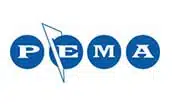Screw Conveyor Screws
Screws can be configured for every application. The Basic Conveyor Flight and Pitch Type Section provides descriptions of various types of screws that can be used in a multitude of bulk material conveying and processing applications.
The use of helicoid or sectional screws is dependent upon the requirements of the application and the needs of the end user. In general, helicoid screws are used in light to medium duty applications, and are more cost effective when compared to sectional screws. Sectional screws can be configured for almost every type of application with special features such as ribbon or cut-and-folded flighting. Sectional screws can also be manufactured from special materials such as AR-235 or 316 stainless steel.
Screw section length is also dependent upon the requirements of the application and the needs of the end user. Standard screw lengths and hanger bearings can be used where the bulk material is non-abrasive and free-flowing. Single length screws are recommended for abrasive, heavy industrial applications.
Screws are available in right and left hand construction. Right hand screws are much more common and are recommended for almost every application. Spare parts are more readily available for right hand screws. The ”hand” of a screw along with the direction of rotation of the screw determine the direction of bulk material flow. The diagrams below illustrate the direction of bulk material flow for both right hand and left hand screws when rotated clockwise or counter clockwise. The rotation arrows indicate the location of the motor and gear reducer. The direction of bulk material flow is reversed when the direction of rotation is reversed.
A right hand screw with the motor and gear reducer located on the discharge end pulls the bulk material toward the discharge end and rotates clockwise.
A left hand screw with the motor and gear reducer located on the discharge end pulls the bulk material toward the discharge end and rotates counter-clockwise.
To determine the hand of a screw, observe the slope of the near side of the flighting. If the slope is downward to the right, then the screw is right hand. If the slope is downward to the left, the screw is left hand.






Using the Component Guide Basic Conveyor Flight and Pitch Types






